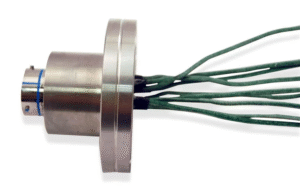Trade show fabrication is the process of designing, constructing, and assembling exhibition booths that represent a brand in the most compelling way. Whether you are a small business or a large corporation, understanding the essentials of materials, design, and build can help you create a booth that attracts visitors, generates leads, and strengthens brand identity. A well-executed trade show display doesn’t just look good—it supports your marketing goals.
Understanding Trade Show Fabrication
Trade show fabrication involves turning creative booth concepts into physical structures. It incorporates elements such as framework, graphics, lighting, flooring, and signage. Professional fabricators work closely with brands to ensure every part of the booth aligns with their goals and target audience. With strategic planning and skilled craftsmanship, fabrication transforms ideas into immersive experiences that drive engagement.
Choosing the Right Materials
Materials play a major role in durability, aesthetics, portability, and cost. Trade show booths may require lightweight components for easy transportation, strong structural materials for stability, and premium finishes for a high-end appearance. Common materials include aluminum frames, wooden panels, acrylic sheets, LED panels, foam boards, fabrics, and modular plastic. The choice depends on booth size, design complexity, and budget. High-quality materials also reduce damage risks and ensure the booth lasts for multiple events.
The Importance of Lightweight Structures
Lightweight materials like aluminum extrusion and tension fabric systems are popular because they reduce shipping costs and make setup faster. These systems are flexible and highly customizable, allowing brands to create unique shapes and layouts without adding unnecessary weight. For brands attending multiple events yearly, lightweight structures offer significant long-term savings.
Creating an Effective Booth Design
Design is the heart of trade show fabrication. A strong design should visually communicate the brand’s identity while maintaining functionality. Elements like open layouts, clear traffic flow, strong lighting, and eye-catching colors are essential. The design should ensure visitors can easily explore product displays, interact with staff, and understand the brand message quickly. A well-designed booth guides the visitor’s attention naturally while standing out in a crowded exhibition hall.
Incorporating Graphics and Branding
Bold, high-quality graphics are crucial for attracting visitors from a distance. Large backdrops, banners, LED walls, and printed fabric displays help tell a brand’s story visually. Consistent use of logos, brand colors, and messaging builds recognition. Clear, minimal text is more effective than overwhelming paragraphs—most visitors only glance for a few seconds before deciding whether to enter a booth.
Lighting as a Design Element
Lighting is a powerful tool in trade show fabrication. Different lighting types—spotlights, LED strips, overhead lighting, and decorative lighting—create contrast, highlight products, and set the mood. Proper lighting can make even a small booth look impressive. It also improves visibility for demonstrations and enhances the overall visitor experience.
Building a Functional Layout
A great booth isn’t just visually appealing—it must also be functional. The layout should allow smooth traffic flow, comfortable interaction space, and clear product presentation. Designers often divide the booth into zones: welcome area, demo area, meeting area, and product display area. Well-planned layouts help staff engage visitors easily and ensure the booth operates efficiently during peak hours.
Modular vs. Custom Builds
When planning a booth, businesses often choose between modular and custom fabrication. Modular booths are cost-effective, reusable, and easy to transport. They suit brands that attend frequent events. Custom booths, however, offer complete freedom in design and creativity. They allow brands to create iconic, immersive experiences tailored specifically to their needs. The choice depends on budget, event frequency, and marketing goals.
Sustainability in Trade Show Fabrication
Many companies are now adopting eco-friendly fabrication methods, using recycled materials, energy-efficient lighting, and reusable structures. Sustainable booths not only reduce environmental impact but also appeal to eco-conscious audiences. These green fabrication choices can also reduce long-term costs by minimizing waste.
Ensuring Easy Setup and Breakdown
An important part of fabrication is ensuring that the booth can be assembled and dismantled easily. Tool-free systems, labeled components, and modular frames simplify the process. This reduces labor costs, prevents delays, and minimizes damage risks during handling. A well-fabricated booth should be practical for the team to manage, even in tight event schedules.
Final Thoughts
Trade show fabrication is a critical investment for businesses looking to make a strong impression at exhibitions. Understanding the essentials—materials, design, and build—allows brands to create booths that look stunning, function smoothly, and drive meaningful engagement. With the right fabrication strategy, a trade show booth becomes more than a display; it becomes a powerful marketing asset that captures attention and converts visitors into customers.


